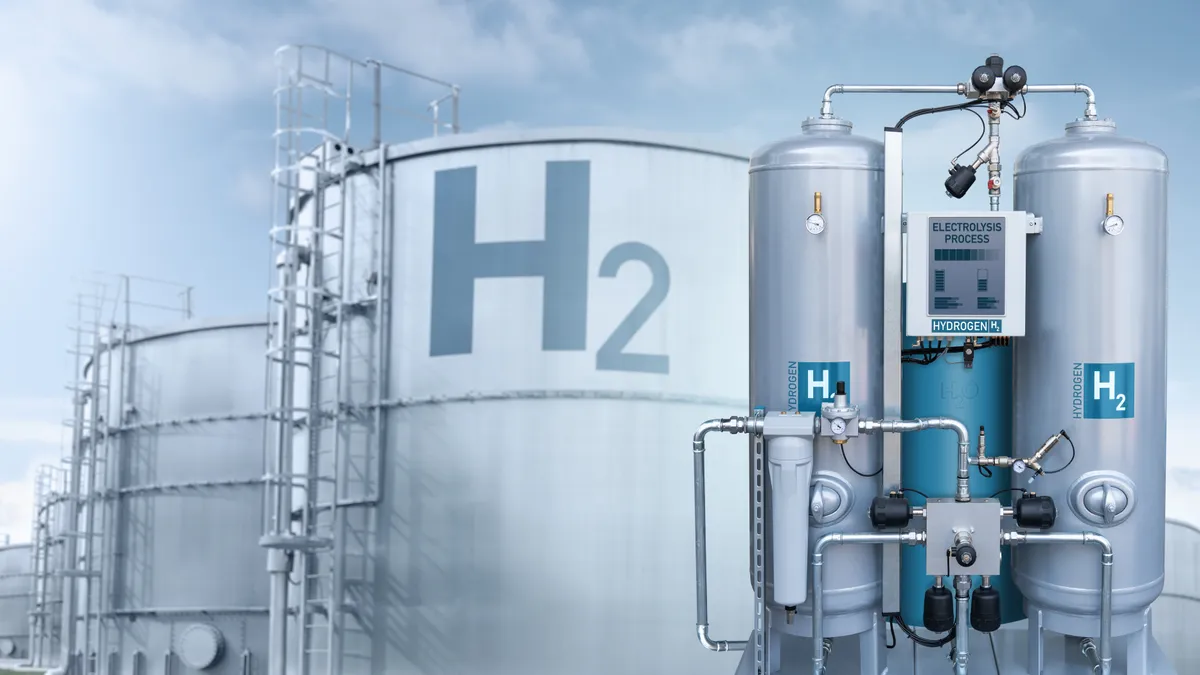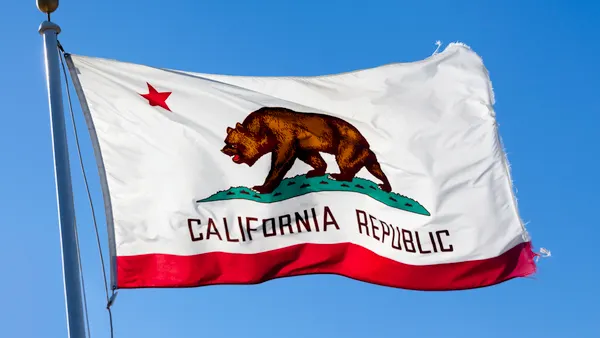Dive Brief:
- The U.S. Department of Energy on Wednesday finalized award commitments of $1.2 billion for the Gulf Coast Hydrogen Hub and $1 billion for the Midwest Hydrogen Hub. Funding for three other hubs, the Appalachian, California, and Pacific Northwest hydrogen hubs, were approved earlier this year.
- Wednesday's announcement leaves funding for two hubs waiting for final approval.
- The hub approvals will clear the way for hydrogen projects that were waiting for associated infrastructure or offtake agreements to come together, according to Frank Wolak, president and CEO of the Fuel Cell and Hydrogen Energy Association. However, he and other industry leaders say the as-yet unfinished 45V hydrogen tax credit guidance will have a significant impact on whether the hubs will realize their full potential.
Dive Insight:
Thirteen months is a long time to wait just to “get to the starting line.” But with final approval and an initial dispersal of $22 million in hand, the Gulf Coast Hydrogen Hub is ready to begin, Ted Barnes, senior director of GTI Energy's Hydrogen Technology Center, said Wednesday.
GTI Energy is an organizing partner in the Gulf Coast Hydrogen Hub, which aims to become the largest of the nation's seven hydrogen hubs with its $1.2 billion grant — the largest sum awarded in DOE’s hub contest alongside California's $1.2 billion grant. Although the details are still being worked out, Barnes said, the Gulf Coast partners envision an ecosystem with four hydrogen project sites connected via hydrogen pipelines to end users ranging from refueling stations for fuel cell trucks to industrial customers making ammonia, petrochemicals and marine fuels. Hydrogen production will be split between electrolytic hydrogen made with renewable energy, and hydrogen derived from natural gas, Barnes said.
“We have partners and the full sweep of projects from the beginning to end of that ecosystem, and then we are overlaying that over the existing network in the gulf coast,” Barnes said. “Texas has essentially the largest hydrogen production and distribution network in the U.S., and we're taking this new clean energy plan and overlaying it on top of all that existing infrastructure.”
But realistically, it will still be some time before any of these projects put steel in the ground. The Gulf Coast hub plans to spend the next 18 months in the first planning-oriented phase of the project. Engineering and design is expected to span another three to four years following the planning phase, and actual construction won't begin until the third phase, Barnes said.
Most of the other six hydrogen hubs have also received a green light from the DOE. California's hub aims to use hydrogen made from renewable energy and biofuels to decarbonize public transportation, heavy duty trucking and port operations, while the $925 million Appalachian hub in West Virginia, Ohio and Pennsylvania will explore potential applications of carbon capture in hydrogen production. The Pacific Northwest and Midwest hubs, which both received $1 billion, will focus on decreasing electrolyzer costs and industrial decarbonization, respectively.
The two smallest hubs by financial award — the $925 million Heartland hub in Minnesota, North Dakota and South Dakota, and the $750 million Mid-Atlantic hub in Pennsylvania, Delaware and New Jersey — are still waiting for final approval from the DOE. The Heartland hub plans to focus on fertilizer production and decarbonization in the agricultural sector, while the Mid-Atlantic hub expressed an interest in re-purposing existing energy infrastructure, including nuclear power plants, to create hydrogen.
Work at the newly approved hubs should help to catalyze momentum in an industry that has seen project announcements and progress stall over the past year following the release of an unpopular draft guidance outlining the rules for the 45V hydrogen production tax credit created by the Inflation Reduction Act, Wolak said. The hub funding should be particularly instrumental to projects that were waiting for key factors such as pipeline infrastructure or offtake agreements to fall into place, he said.
But the 45V tax credit remains critical, Wolak said. If finalized in its current form, which would bar hydrogen produced using existing nuclear plants or surplus hydropower, the tax credit could have significance ramifications for hydrogen projects within and without the hubs, Wolak said.
Barnes agreed, noting that the hub leaders sent a joint letter earlier this year to Secretary of the Treasury Janet Yellen asking her to reconsider the guidance.
“I do think the hubs will support” the growth of the hydrogen industry in the U.S., Barnes said. “But the importance of the 45V tax credit can't be understated either. Getting that out and getting that right is very important to the growth of the industry.”














